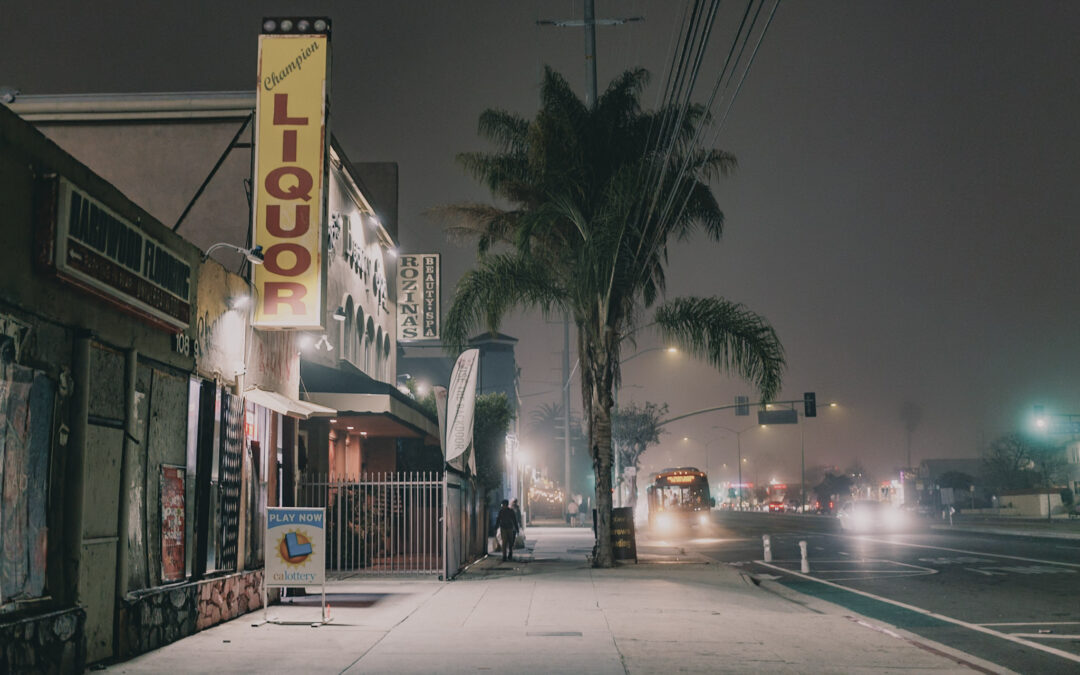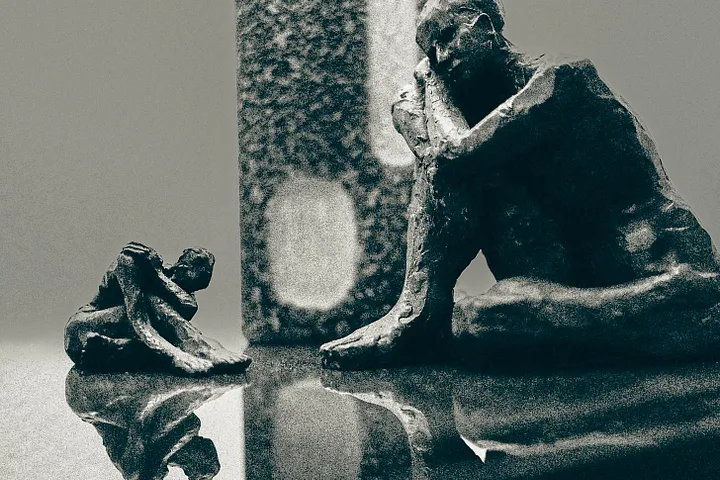
Art as War
Somewhere in the strange land of four a.m. I realized I had not looked at a clock for eight hours. Nor had I eaten, or even stood up from my desk. All night, I had been writing manically across various projects, jumping from one idea to the next like someone possessed. I was not so much fighting as simply weathering an assault, ducking and dodging thoughts as they jumped out of the darkness around me.
My opponent was the detritus of a couple of short stories, the guts of an already failing novel (which would remain unfinished, as usual), and more scraps of poetry than I could count.
At that moment, I felt buried in creative wreckage, like something inside me had exploded, propelling fragments of consciousness in every possible direction. To this, I had added a generous helping of my own squalor. An unmade bed, items of clothing strewn across the floor, at least a dozen dirty cups or mugs on various surfaces.
I had not been drinking then, although I felt a familiar fuzz around the edges of my vision, the sensation of having had the shit kicked out of me by nothing more substantial than a dream. For a long time, I just sat, trying to steady myself.
No good. Too much caffeine. Not enough of it. No booze.
The whole place was ransacked. Every corner resembled a battle site. I went to the bathroom for a drink of water and glimpsed bare bones in the mirror, the angular hostility of an unshaven jaw; eyes sunken and dark from no sleep, like two bruised moons.
No, I had not been drinking that night. I hadn’t been sick or fighting with anyone. Nothing had happened to me, nothing at all. I had been writing.
Just trying to make art.
Self Against Self
Art is beauty — I have no doubt. But there are times when I feel that it is also war; that a major aspect of any creative effort involves pitting one part of the self against the other.
On one hand, I experience a constant compulsion to make and engage with art, to live creatively no matter the cost. On the other, I find something within me fiercely resisting the same impulse, at times fighting doggedly against it.
I sit at my desk, ostensibly calm and unmoving. But something isn’t working. The words aren’t coming. Ideas hover around me, but won’t fall into place. Finally, I think of a good sentence and move my fingers to strike the keys; but half of them hit the wrong letter, or hit no letter at all, so that all that emerges is a garbled non-sentence and the fading laughter of fleeing inspiration.
My art — all the art I’ve ever made appears before me as a single substance, a sea of thin, yellowing fiber spreading across my desk like mold.
Still sitting calmly, but now incensed, I feel my muscles tighten and my skin begin to sweat. I want to jump up and tackle myself; I want to bash in my own head.
Why isn’t this working for me!
And yet to an outsider looking in, I’m just sitting there quietly with my head in my hands.
The process is not always this intense, of course. Sometimes, I take my notebook to a quiet coffee shop where I can sit and watch people come and go. I often wander with my camera, raising the lens now and then to probe some salient detail in the otherwise familiar surroundings. Maybe I’ll find an important truth there, maybe just something that makes me smile.
As always, the city is at war around me, but for a moment, I am immune to it, shielded from the ceaseless conflagration of modern life by the same thing that not a few nights ago was grinding me into the ground.
This too is the creative process — another form of it.
A Fraught Dichotomy
Is this dichotomy really necessary? Shouldn’t making art always feel like that coffee shop and casual stroll? Something gentle, fortifying. After all, this is something I choose to do, something I make great effort to find space for in my life. I sure as hell don’t get paid for it — not frequently, at least. Nor does society at large find it particularly worthy of their attention.
And yet I do it. I want to do it. I love it.
Ah yes, the L-word. There’s your answer right there.
You think love is always olive branches and doves?
Your Heart is a Battlefield
This makes me think of something William Faulkner said when receiving the Nobel Prize for Literature in 1943. Giving a speech at the celebratory banquet he described good writing as concerned with “the human heart in conflict with itself.”
In context, he was addressing future generations of writers, fearing that in the anxiety-inducing shadow of the Nuclear Age, they would turn their attention from inner to outer, weakening their work as a consequence.
For Faulkner and other practitioners of literary modernism, the inner life of the individual assumes absolute primacy in the grand drama of the species as a whole. They do not dismiss external aspects such as the wars that defined their time, but seek root causes in human consciousness.
From this perspective, when humans fight each other it is really because they are fighting themselves, are struggling to contain an unending inner rebellion.
Where the Nineteenth Century was preoccupied with external socio-political ills imposed on the individual by agents of power, the modernists considered the most significant enemy to lurk within. To catch a glimpse of it, you have only had to look in the nearest mirror.
Following this logic, you come to a clear conclusion: Without resolving inner conflict, all other conflicts remain inevitable.
Is this what the creative act is — a heart at war with itself? Not just within the content of an artwork, but through the process itself. Is the impulse to create a form of self-struggle through which we play out our own existential uncertainties? When we make art, we are simultaneously trying to make our selves, to craft our own being according to principles inexpressible as mere logic?
If so, what does it mean to have some part of our personality actively oppose this?
Where does this villain come from? What is it, even?

Being Against Non-Being
There is more happening here than can be explained by common psychological pathologies and the stresses of the modern world. Yes we may turn away from art for any number of mundane reasons, many of them plausible — a lack of money and time; the need to earn a living and focus on our loved ones; common human neuroses like self-doubt, fear and poor self-worth.
But in the struggle to create, a deeper existential resistance comes into play, something almost spiritual in the way that it pits fundamental principles against each other.
Why something instead of nothing? Why be when it would be easier not to be? Why endure the struggle of making something, when you could sit on the couch and drink beer instead?
As animals equipped with fierce survival instincts, we take this desire to exist as a given, as a quality shared across the length and breadth of human experience. We want to live. To live is good, a gift — how could we choose anything other than life? This is why suicide is so abhorrent to us — the ultimate refutation of species and civilization.
At the same time, we acknowledge that to be is difficult, that existence is fraught with inevitable suffering, whether through big, flashing catastrophes such as war and poverty, or just the unremarkable fact of our mortality and impermanence.
Why are we so certain that existence is favorable to non-existence; or that the creative act is a worthwhile expenditure of time and effort?
Maybe that inner force trying to prevent us from creating anything new, actually has our best interests at heart. Maybe it’s trying to save the universe the pain of yet more existence, yet more complexity, confusion, suffering and loss.
Because you can’t suffer if you don’t exist…
You can’t be a failed artist if you don’t try to make art in the first place…
Following this problem, Christian theologian Paul Tillich acknowledges that simply existing takes a certain amount of bravery and resolve; that to live is a choice we make daily, an inverted version of Camus’ view of life as a daily rejection of suicide.
For Tillich, “The courage to be is rooted in the God who appears when God has disappeared in the anxiety of doubt.” That is to say, God’s role in a believer’s life is not so much as an arbiter of their existence, but as the source of strength they draw upon to live fully despite the suffering endemic to day-to-day consciousness. In Tillich’s opinion, the external, deistic god — God The Father — has disappeared, replaced by the god of personal existence, of our inner life.
Maybe art plays the same role in the lives of those of us who do not believe, the artist creating as a statement of their own courage to be, their work a personal answer to the silence of the gods.
In this case, creative resistance might be thought of as a personal devil, an eternal adversary pitted against the goodness of life. To make art is to refute non-being and any piece of created work is a record of its defeat.
That’s why art is difficult sometimes, sometimes such a struggle — not only because these qualities imbue it with significance and meaning, but because any created thing is a microcosm of life as a whole, of all of creation.
Art as war. Art as love and beauty. All these qualities impossibly entwined.

Sunday. Three-thirty. Soft gray light through the slats of the shade across my desk. The apartment is quiet, the streets outside strangely subdued. There is nowhere to be, nothing that needs done as a matter of urgency. Books and notebooks fan out around me. Otherwise, my room is clean and tidy, my face neatly shaven and well-slept. No pits for eyes today.
Yet, I’m still not completely at ease.
The article you’re reading was a difficult piece, for sure. It started as something entirely different and then split and spread out in several directions at once, winnowing wildly between contrasting themes and perspectives.
In other words, it was a mess.
I’ll confess, I despair a little at times like these. With so much of my self-worth contingent on my creative output, my well-being is often dangerously tethered to how well a given project is going, how often I’m publishing and the kind of reactions I get when I do.
I have to get something out of every session. I have to be consistent with my posting, produce new work as often as possible. If just this one measly article takes so long and requires so much effort, how can I ever hope to post weekly, let alone daily, the way some people do?
And even after all that work, it’s still a mess anyway — garbled, incoherent, mercilessly ambling…
Maybe. Maybe not.
But it’s made, at least— a new creation, something that once wasn’t and now is. Between something and nothing, I chose something, and I saw it through and gave it form, no matter how imperfect.
I think that alone is worth a deep breath and maybe another cup of coffee before I stretch and sigh and brace once again for the next battle.
To recieve posts directly into your mailbox, and access exclusive content, join me on Substack!

